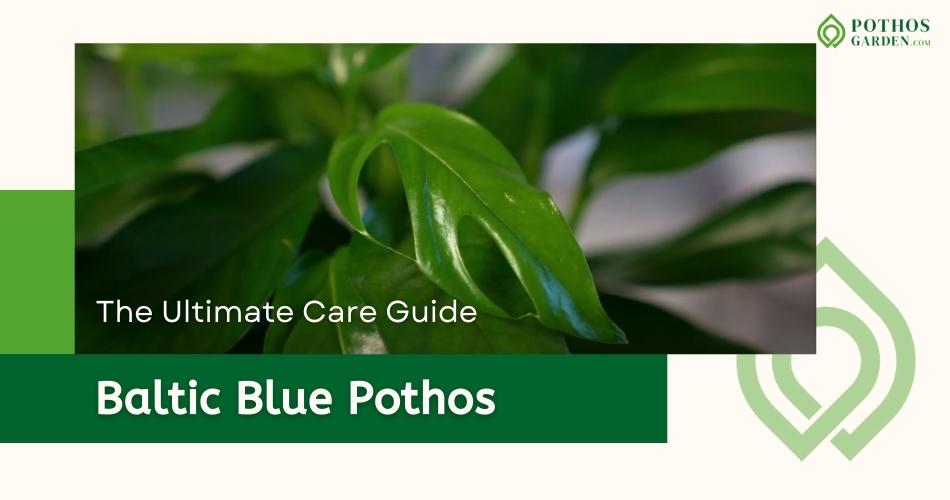Curious about Baltic Blue Pothos? Look no further! This article is your go-to resource for all the answers to your burning questions about this trendy houseplant. We address common concerns such as watering frequency, light requirements, and troubleshooting issues that may arise. Furthermore, we provide insights into how to incorporate Baltic Blue Pothos into your interior decor, offering inspiration and practical tips for creating stunning displays that will impress both guests and fellow plant enthusiasts.
Baltic Blue Pothos: An Overview
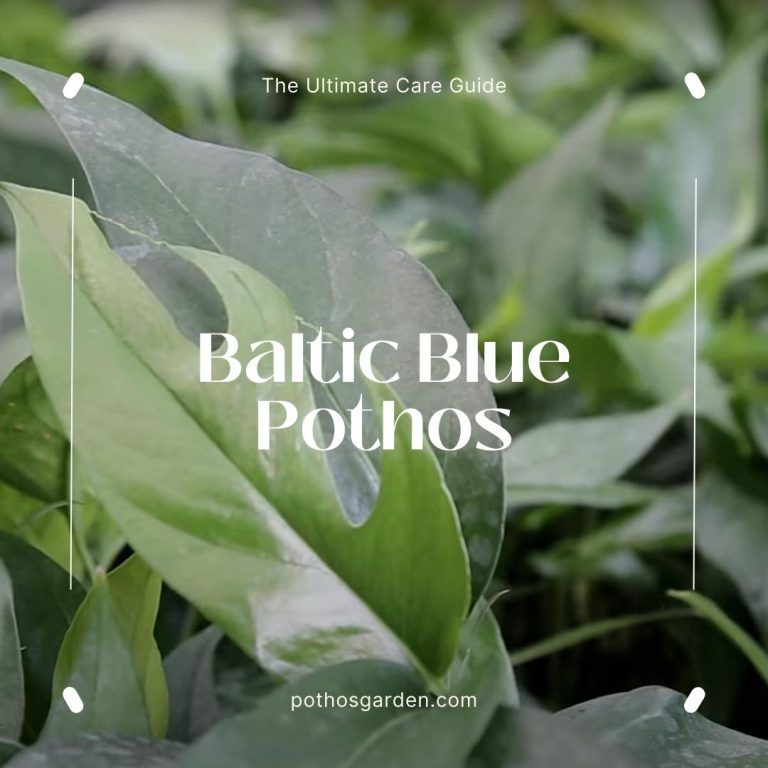
The Baltic Blue Pothos, also known as Epipremnum pinnatum ‘baltic blue,’ has experienced a surge in popularity as an indoor plant in recent years, and it’s easy to understand why. Alongside its Pothos counterparts, this plant boasts fast growth and requires minimal care. What sets it apart is its notable large leaves, characterized by a captivating deep blue-green hue and the tendency to develop fenestrations once it reaches a well-established state. Embracing the Baltic Blue allows you to indulge in its alluring aesthetics while enjoying the ease of care it offers.
Scientific Classification
The Baltic Blue Pothos shares a close genetic relationship with the trendy Cebu Blue Pothos, as both belong to the Epipremnum pinnatum species.
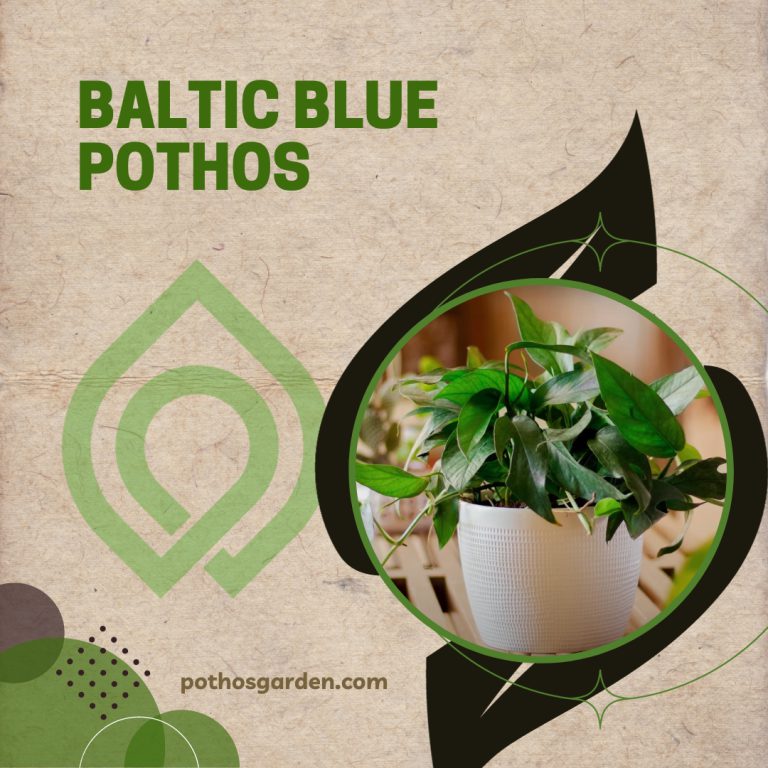
7 Secrets to Successful Baltic Blue Pothos Care
Caring for this Pothos involves providing the right conditions for its growth and well-being. Discover these essential care tips to unlock the secrets behind:

1- Lighting
Place your Baltic Blue in bright, indirect light. It thrives in medium to bright light conditions. Avoid exposing it to direct sunlight, as it can scorch the leaves. If natural light is limited, you can supplement with artificial grow lights placed a few feet away from the plant.
2- Temperature and Humidity:
Baltic Blue Pothos prefers average room temperatures between 65-85°F (18-29°C). It also appreciates moderate to high humidity levels. You can increase humidity by misting the leaves regularly or placing a humidifier nearby. Grouping plants together can create a microclimate with increased humidity.
3- Watering:
Water your Pothos when the top inch of the soil feels dry. Ensure thorough watering, allowing excess water to drain out. Avoid overwatering, as it can lead to root rot. Adjust the frequency of watering based on the environmental conditions and the moisture needs of the plant.
4- Soil and Potting:
Use a well-draining potting mix for your Baltic Blue. A mixture of peat moss, perlite, and potting soil works well. Choose a pot with drainage holes to prevent waterlogging. Repotting may be necessary when the plant outgrows its current container.
5- Fertilization:
Feed your Baltic Blue Pothos with a balanced, water-soluble fertilizer during the growing season (spring and summer). Follow the instructions on the fertilizer package for dilution and frequency. Refrain from fertilizing during the dormant period (fall and winter).
6- Pruning:
Regularly prune your Baltic Blue Pothos to maintain its shape and encourage bushier growth. Trim yellowing or damaged leaves using clean, sharp scissors. You can also trim long trailing vines to control the plant’s size and promote fuller growth.
7- Cleanliness:
Dust the leaves of your Pothos periodically to keep them free from dust buildup. Wipe the leaves gently with a damp cloth or give them a gentle shower to maintain their ability to photosynthesize effectively.
How to promote fenestration (holes/splits) in Baltic Blue Pothos leaves?
Fenestration, the natural development of holes or splits in the leaves, is an inherent process that unfolds as the Baltic Blue Pothos plant matures. While it cannot be artificially induced, you can create an environment conducive to fenestration by ensuring the plant receives abundant bright light, maintaining moderate to high humidity levels, and adhering to proper watering practices. These optimal conditions have the potential to encourage and enhance the fenestration process, allowing the captivating leaf patterns to gradually emerge.

How to propagate Baltic Blue Pothos?
Propagating Baltic Blue Pothos is a straightforward process that yields reliable results. To propagate this plant, take a healthy stem cutting that possesses a minimum of two nodes. Submerge the cutting in water or plant it directly into moist soil, providing it with sufficient exposure to light and warmth. By offering optimal growing conditions, you can foster successful propagation and witness the development of new roots, enabling the cutting to establish itself as an independent plant. Remember to monitor the moisture levels and ensure the propagated cutting receives the necessary care to flourish.
Best time for potting or repotting the Baltic Blue Pothos?
Potting and repotting Baltic Blue Pothos is necessary to provide the plant with adequate space for growth and prevent it from becoming root-bound. It’s essential to consider repotting your Baltic Blue Pothos every 2-3 years or when you notice signs that it has outgrown its current container.
Some indications that it may be time to repot include roots protruding from the drainage holes, the plant becoming top-heavy and unstable, or the soil drying out more rapidly than usual. Repotting allows for fresh, nutrient-rich soil and improved drainage, promoting the health and vitality of your Baltic Blue Pothos. Remember to choose a pot that is slightly larger than the current one, use well-draining potting mix, and provide appropriate post-repotting care by adjusting watering and monitoring the plant’s response. By providing sufficient space for its roots to expand, you can ensure your Baltic Blue Pothos continues to thrive and flourish in its new home.
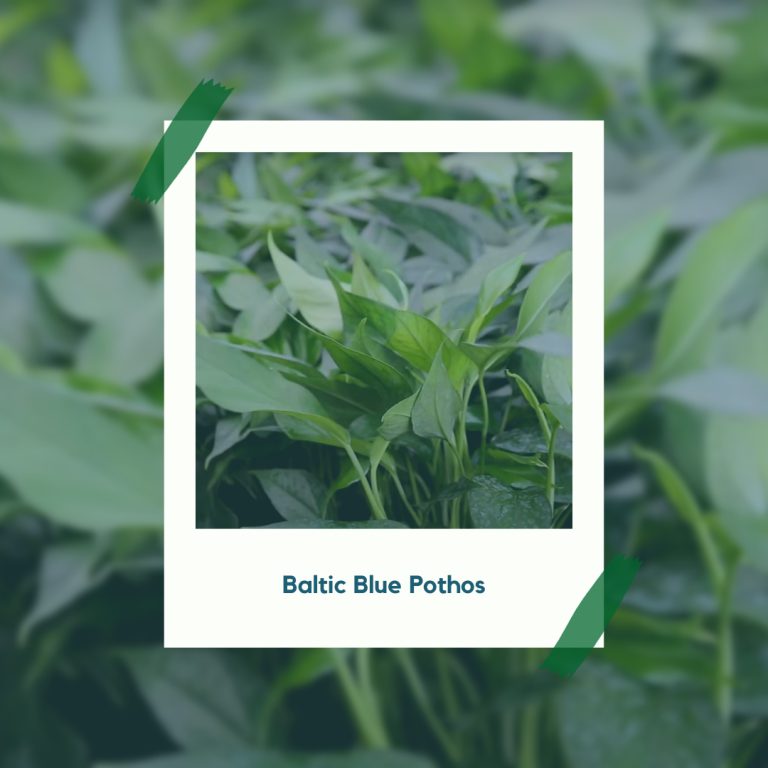
How often should I fertilize Baltic Blue Pothos?
During the active growth period of Baltic Blue Pothos, which typically occurs in spring and summer, it’s essential to provide proper fertilization. Use a well-balanced, water-soluble fertilizer specifically formulated for houseplants. Dilute the fertilizer according to the instructions on the package and apply it at the recommended frequency. It’s crucial to avoid fertilizing during the plant’s dormant phase in fall and winter when its growth slows down. By adhering to these guidelines and adjusting the fertilization schedule based on the plant’s needs, you can ensure that your Baltic Blue Pothos receives the necessary nutrients for healthy and vibrant growth.
How Large Can Your Baltic Blue Pothos Plant Grow?
Baltic Blue Pothos has the potential to reach impressive sizes, showcasing its lush foliage and trailing vines. Under optimal conditions, this plant can grow up to several feet in length, with its vine reaching lengths of 6 to 10 feet or more. The leaves can also expand to substantial dimensions, typically ranging from 2 to 4 inches in width and 4 to 8 inches in length.
However, it’s important to note that the growth rate and ultimate size of your Baltic Blue Pothos will depend on various factors, including environmental conditions, available space, and the care provided. By offering ample room for its trailing vines, providing suitable light, temperature, and humidity levels, and implementing proper pruning techniques, you can help your Baltic Blue Pothos achieve its full growth potential and create a stunning display of abundant foliage in your living space.
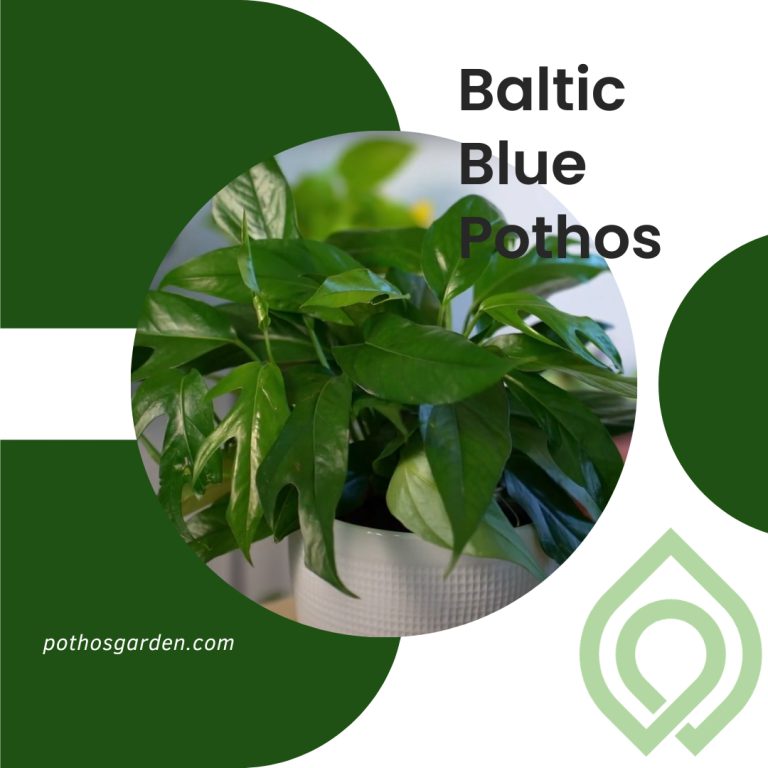
Is Baltic Blue Pothos safe for pets?
Baltic Blue Pothos (Epipremnum pinnatum ‘baltic blue’) is considered toxic to pets if ingested. The plant contains calcium oxalate crystals, which can cause irritation and discomfort if consumed by cats, dogs, or other animals. Ingestion may lead to symptoms such as drooling, vomiting, difficulty swallowing, and oral irritation. It is crucial to keep Baltic Blue Pothos out of reach of pets and to monitor their interactions with houseplants to prevent any accidental ingestion. (American Society for the Prevention of Cruelty to Animals (ASPCA))
If you suspect that your pet has ingested any part of the Baltic Blue Pothos or is exhibiting symptoms of plant toxicity, it is recommended to contact your veterinarian immediately for appropriate guidance and care.
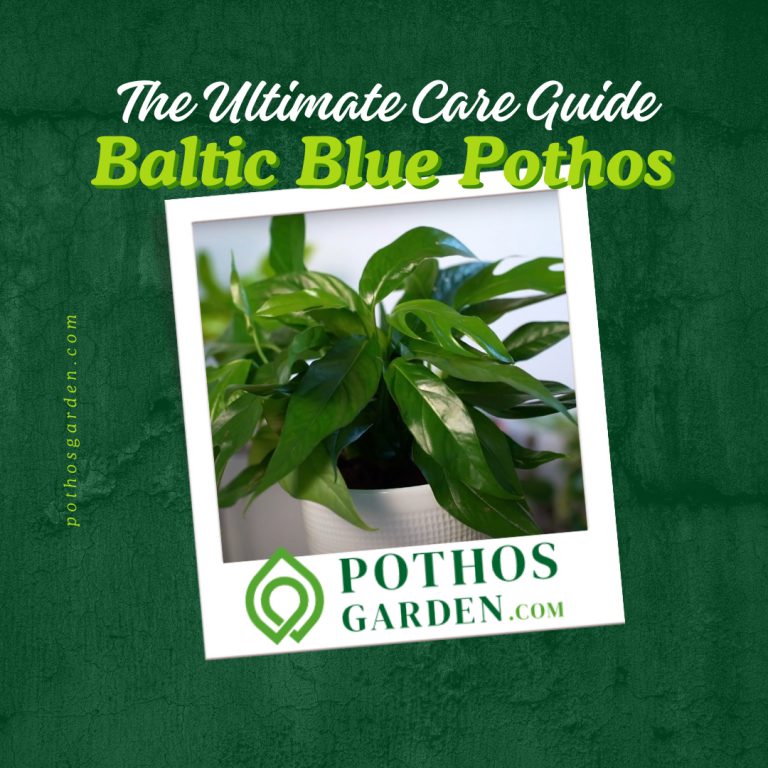
What are Common Problems with Baltic Blue Pothos?
Yellow Leaves
Yellow leaves in Baltic Blue Pothos can be caused by overwatering, underwatering, or nutrient deficiencies. To avoid yellow leaves, assess the moisture levels of the soil and adjust watering accordingly. Ensure balanced fertilization to provide the necessary nutrients.
Brown Spots On Leaves
Brown spots on Baltic Blue Pothos leaves can be caused by excessive direct sunlight, cold drafts, or fungal infections. To resolve brown spots, adjust the lighting conditions to provide indirect sunlight, protect the plant from cold drafts, and address any potential fungal issues.
No Fenestration
One of the reasons why Baltic Blue Pothos leaves may not fenestrate is insufficient light. In low light conditions, the plant conserves energy by keeping its leaves small. To encourage fenestrated growth, consider relocating your plant to a brighter spot and allowing a few months for potential changes. Additionally, it’s important to note that younger plants may not develop fenestrations until they mature. Patience is key, as with time, you can expect to see the desired fenestrated leaves in your Baltic Blue Pothos.
Pro Tips for Optimal Care:
• Boost humidity levels with a clever hack: Employ a pebble tray to create a moisture-rich microclimate.
• Encourage symmetrical growth by regularly rotating your Baltic Blue Pothos for even exposure to light.
• Maintain the plant’s well-being by watering with room-temperature water, ensuring a gentle and nurturing touch.
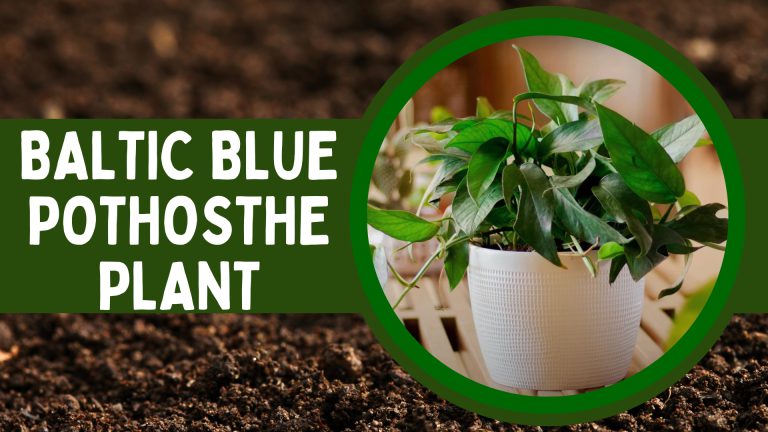
Conclusion
Baltic Blue Pothos is a stunning and easy-to-care-for houseplant with deep blue-green leaves. Follow essential care tips for lighting, watering, and fertilization to ensure its health. Learn about propagation, potting, and repotting for successful plant care. Promptly address common issues like yellow leaves and brown spots. With attention and care, your Baltic Blue Pothos will thrive and enhance your space.
Thank you for joining us on this journey through the world of Baltic Blue Pothos. We hope this article has provided you with valuable insights and practical tips to care for your plant!

